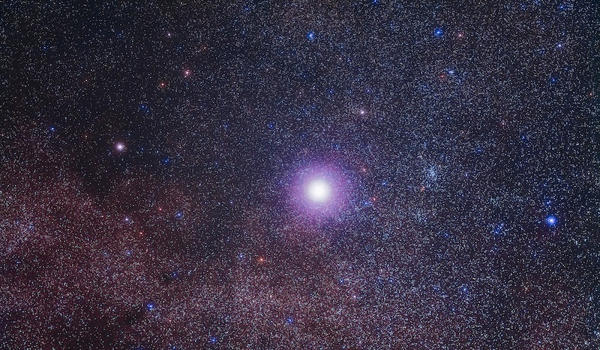Beta Centauri is a triple star system in the southern constellation of Centaurus. It is also known as Hadar, is the second brightest star in the southern constellation Centaurus. It is the 11th brightest star in the night sky though it is actually a triple star system. The Beta Centauri system is estimated to be around 14.1 million years old. Its origin is unknown, it may have formed from either a molecular cloud of dust and gas or a nebula.
It has around 10.7 solar masses and a radius of around 13 times that of the sun. The system’s combined apparent visual magnitude of 0.61 makes it the second-brightest star in Centaurus and one of the brightest stars in the night sky. This means that its diameter is around 16 times bigger than that of the suns. It also ranks as the 11th brightest star in the night sky. According to parallax measurements from the astrometric Hipparcos satellite, the distance to this system is about 390 ± 20 light-years (120 ± 6 parsecs). While it appears as a single point of light, Beta Centauri is actually a triple star system, about 360 light-years away.

Beta Centauri is well known in the Southern Hemisphere. In 1935, Dutch astronomer Joan Voûte was able to resolve Beta Centauri into two stars, using a telescope. At the time, the stars were 1.1 arc seconds apart. A line made from Alpha Centauri, through Beta Centauri leads to within a few degrees of Gacrux, the star at the top of the Southern Cross. Using Gacrux, a navigator can draw a line with Acrux at the bottom to find South. That separation has since narrowed to about 0.3 arc seconds, requiring specialized imaging techniques to see the faint companion.
Beta Centauri is one of the brightest stars in the sky at magnitude 0.61. It has an apparent magnitude of 0.61, and an absolute magnitude of – 4.53, being around 390 light-years / 120 parsecs away from the Sun. Its brightness varies by a few hundredths of a magnitude, too small to be noticeable to the naked eye. The Beta Centauri star system is composed out of three stars. Two of them – Beta Centauri Aa and Ab are of the spectral class B1 III, while the third one, Beta Centauri B is of spectral type B1V. Because of its spectral type and the detection of pulsations, it has been classified as a β Cephei variable.
Beta Centauri is well known in the Southern Hemisphere as the inner of the two “Pointers” to the constellation Crux, popularly known as the Southern Cross. The Beta Centauri system is estimated to be around 14.1 million years old. It is quite young, much younger than our sun. A line made from the other pointer, Alpha Centauri, through Beta Centauri leads to within a few degrees of Gacrux, the star at the north end of the cross. Using Gacrux, a navigator can draw a line with Acrux at the south end to effectively determine south.
Informaton Source:
















